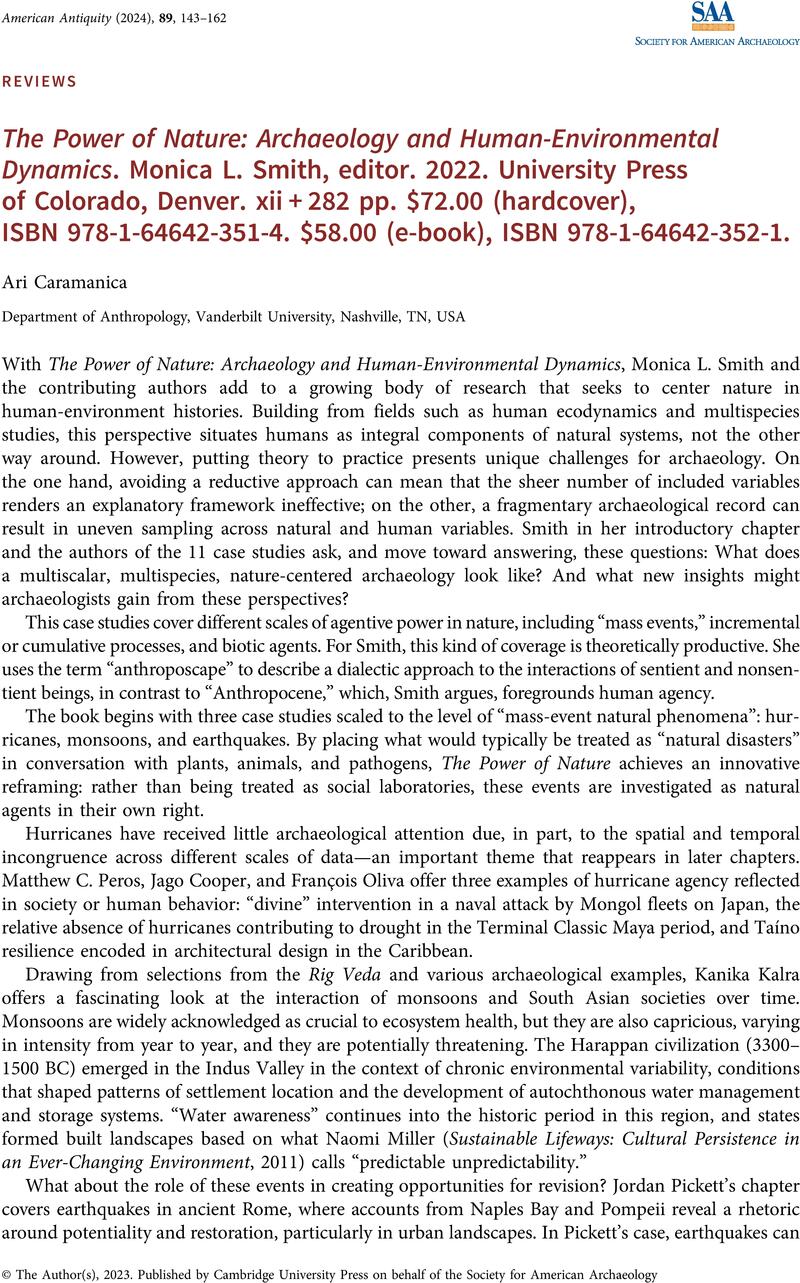No CrossRef data available.
Article contents
The Power of Nature: Archaeology and Human-Environmental Dynamics. Monica L. Smith, editor. 2022. University Press of Colorado, Denver. xii + 282 pp. $72.00 (hardcover), ISBN 978-1-64642-351-4. $58.00 (e-book), ISBN 978-1-64642-352-1.
Review products
The Power of Nature: Archaeology and Human-Environmental Dynamics. Monica L. Smith, editor. 2022. University Press of Colorado, Denver. xii + 282 pp. $72.00 (hardcover), ISBN 978-1-64642-351-4. $58.00 (e-book), ISBN 978-1-64642-352-1.
Published online by Cambridge University Press: 04 October 2023
Abstract
An abstract is not available for this content so a preview has been provided. Please use the Get access link above for information on how to access this content.

Information
- Type
- Review
- Information
- Copyright
- Copyright © The Author(s), 2023. Published by Cambridge University Press on behalf of the Society for American Archaeology

